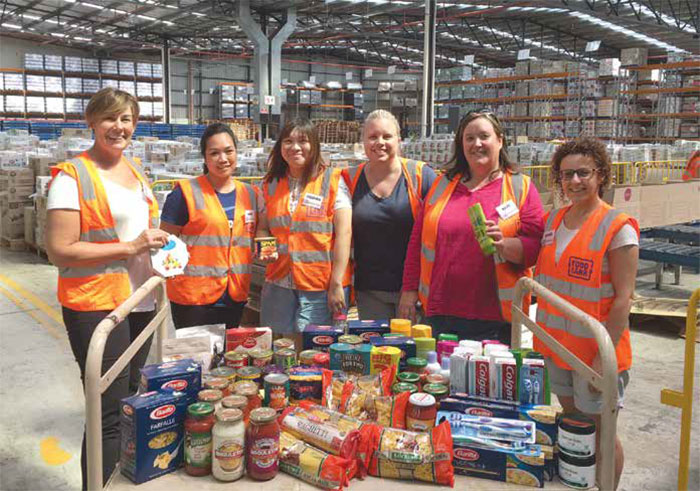Reserve Bank of Australia Annual Report – 2018 Community Engagement
The Reserve Bank devotes considerable effort to community engagement. Staff in the Bank's Head Office and State Offices work to help the community understand the Bank's role and, in turn, to understand the community's perspectives. The Bank supports academic research, continues to build its public education program, and also engages with the public through the Reserve Bank of Australia Museum.
Reserve Bank staff speak with many different groups across the general public, business and government to explain the Bank's role and actions and to hear the community's perspectives, priorities and concerns. In addition to the specific details of community engagement set out in this chapter, many more individual engagements of Bank staff – from the Governor through to staff from all parts of the Bank – occur each week with different individuals and groups throughout the community. These range from the public speeches given by senior Bank staff, as discussed in the chapter on ‘Accountability and Communication’, to small private discussions.
As noted in the chapter on ‘Governance’, the Reserve Bank Board meets in state capitals outside of Sydney on a regular basis. When the Board meets in a city where the Bank has an office (Adelaide, Brisbane, Melbourne or Perth), the Board meeting takes place in that office. Following the Board meeting, a dinner is held with members of the local community, including representatives and leaders from politics, business, the public sector, and educational and community organisations. Every few years, a similar dinner is held in Sydney. In 2017/18, dinners were held in Brisbane in September 2017 and in Adelaide in May 2018. These dinners provide an opportunity to strengthen relationships between local communities and the Bank.

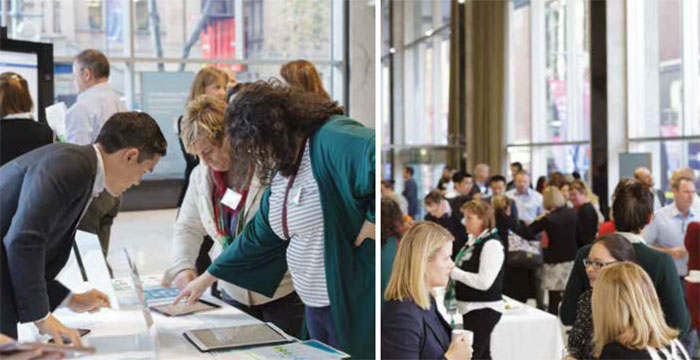
Public Education
A key part of the Reserve Bank's community engagement is interacting with students and educators, particularly in the field of economics. In 2016, the Bank significantly expanded and formalised its approach to public education, creating a Public Access & Education team. This team is dedicated to supporting educators and students and coordinates the efforts of staff across the Bank to deliver a public education program. The team's focus is on supporting economics students and educators at senior secondary and tertiary level. The program also extends to students at different stages of learning. Economic literacy is important to all Australians: individuals' everyday lives are affected by their own economic decisions and by the quality of economic decision-making by both business and government.
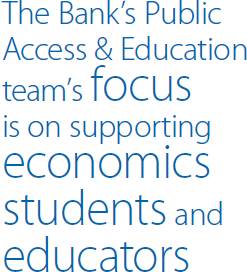
Nationally, the number of high school students studying economics in Year 12 has fallen by around 70 per cent over the past 25 years. The share of high schools offering economics as a subject has also fallen significantly over this period, with the decrease being most pronounced in comprehensive government schools. In addition, females have accounted for a sharply declining share of high school economic students. This is resulting in a student base for economics that is diminishing in both its size and diversity. The Bank is aiming to help redress this by ensuring that students have a stronger appreciation of what economics is, its relevance and the career opportunities that are available. The Bank is also creating content that is aligned with curricula, making more staff available for presentations and providing teachers with professional development opportunities.
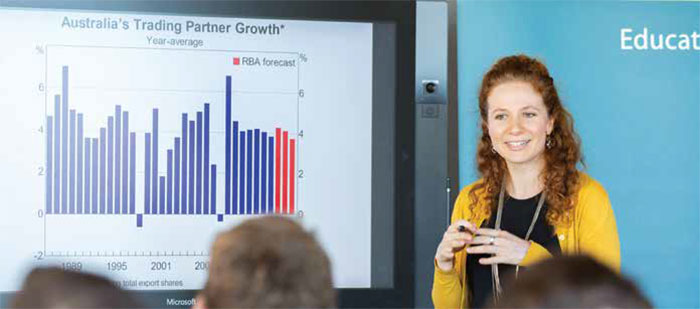
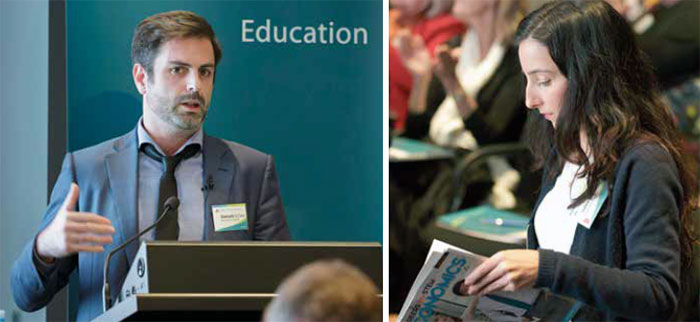
Reserve Bank staff gave presentations to around 7,200 students and over 1,500 educators during 2017/18, across all states. In addition, they attended several major careers fairs and spoke directly with a further 2,000 students. The extent of interaction was made possible by the Bank's Ambassador program, which involves around 50 (mainly young) economists engaging with students and educators. The Ambassadors work closely with staff in the Bank's State Offices, who participate in educational talks and help ensure that these talks are available to students and educators across the country. Visits are also made to universities.
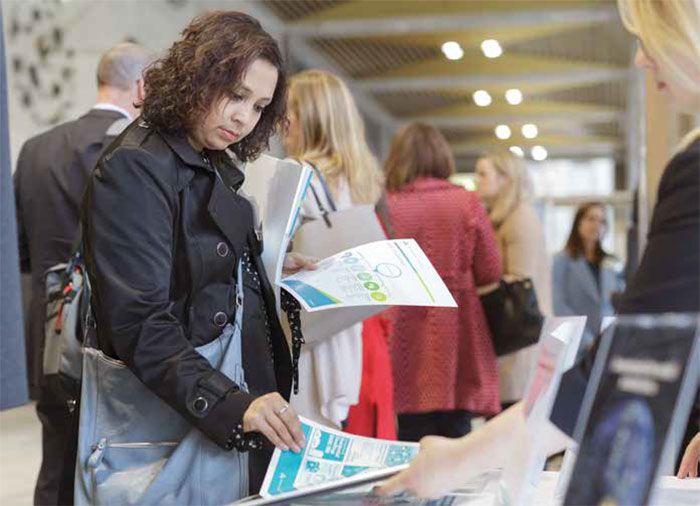
The public education team continued to produce an array of resources in 2017/18. While these have been designed to support students and educators, they are also relevant for a more general audience. They range from simple one-page explanations of economic issues and concepts (the ‘In a Nutshell’ series) through to more detailed explanations of issues that students have frequently asked about (the ‘Explainer’ series). A suite of classroom activities was also produced, along with posters and videos that further explore key issues and explain the value of economics. The resources can be found in the newly developed education section of the Reserve Bank's website.
A second Teacher Immersion event for economics teachers was held at the Reserve Bank in June 2018. The event was formally acknowledged as professional development for maintaining Proficient Teacher Accreditation in New South Wales, as well as meeting accreditation requirements in other states. The event included presentations from a range of Bank staff on core economic topics relevant to teaching senior high school students. There were also practical sessions on how this content could be delivered in the classroom, along with opportunities for teachers to talk with the Bank's Ambassadors and participate in an economics Q&A with senior staff.
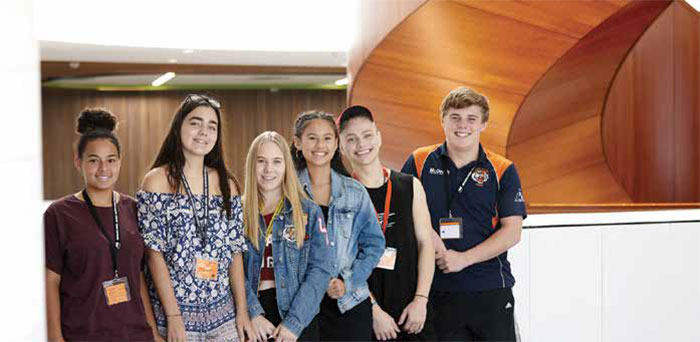
Indigenous students from the University of Sydney's Wingara Mura-Bunga Barrabugu program who did some intensive economics immersion with Bank economists, Sydney, January 2018
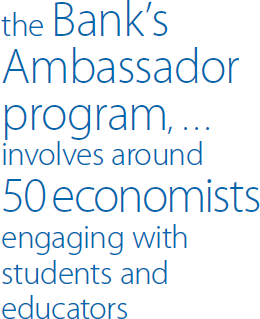
In addition to the delivery of the public education program, research continued on enrolments in economics and the factors contributing to the falling size and diversity of the economics student population in Australia – both at high school and university. Key findings were communicated to the Reserve Bank's Educators Advisory Panel as well as publicly in speeches and external presentations.
The Educators Advisory Panel – which comprises external education experts to advise on the strategic direction of the Reserve Bank's public education program – met twice during 2017/18 to review progress with the program.
Reserve Bank of Australia Museum
The Reserve Bank's Museum houses a permanent collection of artefacts and hosts periodic exhibitions. It also offers regular talks and tours for visitors and students. In the permanent collection, visitors can view the various types of money used before Federation through to the current innovative new series of banknotes. Visitors can observe the evolution of the nation's identity as expressed through its banknotes and learn about the influential women and men depicted on them. They can also see the artwork used in banknote design, learn about how banknotes are made and discover their security features.
The Museum has been showcasing banknotes from the new series in an additional permanent display called A New Vision for Banknotes. In 2017/18, information about the new $10 banknote was added to that for the $5 banknote, which had launched the new series in 2016. The display has been designed to capture the innovative qualities of the new banknote series, the details of their production and the fact that these banknotes allow the vision-impaired community to recognise each denomination more easily by having a tactile feature. The display highlights the new banknotes' artistic design and production process. In addition, a large multi-touch screen enables visitors to explore the design elements and security features of the new banknotes, along with the historical and social context of the imagery and stories that they contain.
Given the ongoing commemoration of the centenary of World War I in the community, the Museum retained its temporary exhibition entitled Before Sunset: The Bank & World War I for another year. The exhibition shows how World War I was associated with the emergence of central banking in Australia. It explains central bank functions, originally performed by a part of the Commonwealth Bank of Australia that later became the Reserve Bank, and showcases artefacts related to the Bank's involvement in the war, including financial documents and rare letters sent to the Governor of the day from the battlefields.
Around 13,000 people visited the Museum during 2017/18, fewer than in recent years, with construction works in Martin Place reducing the number of walk-in visitors. However, the number of organised visits to the Museum continued to increase. Nearly two-thirds of visitors were educational groups, spanning primary schools, secondary schools and universities. The number of secondary school students visiting the Museum has increased significantly in the past two years, consistent with the Reserve Bank's public education initiatives. Senior school groups are offered talks about the role of the Bank and the economy that are aligned with their syllabus for economics and commerce. Talks are also available about the Museum exhibits and the new banknotes, including talks specifically on the Indigenous design elements in Australia's banknotes.
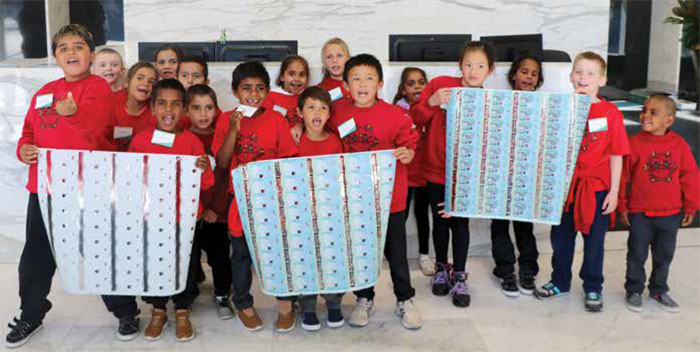
Students from St Therese's Primary School in Wilcannia learn about the $10 banknote during a visit to the Reserve Bank of Australia Museum, Sydney, September 2017
The Reserve Bank once again participated in Sydney Open in 2017 – an event designed to give the public access to important or unique buildings. There were over 1,600 visitors to the Bank's public foyer areas and Museum. These visitors attended talks about the architecture and design of the heritage-listed Head Office building. They also attended talks on the processes involved in the artistic design of a banknote, with visitors able to meet a designer of the new $10 banknote. In addition, smaller groups enjoyed access to select parts of the building where they received presentations about the Bank's art collection, which forms part of the cultural legacy of former Governor HC Coombs.
Most of the information in the Museum is depicted on the Museum's website. Additional resources were added to the Museum website in 2017/18, including an expansion of the existing online exhibition associated with World War I to mark the centenaries of the defining Western Front battles of 1918 in which former Bank staff were involved. There was also an online exhibition called Make Your Money Fight! in which rare archival items were curated and shared with the public digitally. The exhibition explored the central bank's response to the threat of inflation that stemmed from the dramatic reduction in unemployment and the scarcity of consumer goods during World War II. It explained the war loans campaign, the introduction of rationing and the austerity measures designed to support the war effort and restrain inflation – an exercise in which Australia's central banking functions were further developed.
Assistance for Research and Education
The Reserve Bank sponsors economic research in areas that are closely aligned with its primary responsibilities. This sponsorship includes financial support for conferences, workshops, data gathering, journals and special research projects, and encompasses areas of study such as macroeconomics, econometrics and finance. In addition, the Bank provides financial support to the Centre for Independent Studies and the Sydney Institute. It is a corporate member of the Lowy Institute for International Policy and The Ethics Centre. The Bank is a member organisation of the Committee for Economic Development of Australia (CEDA); the Bank's membership of CEDA includes an annual research contribution.
In 2017/18, the Reserve Bank continued its longstanding contribution towards the cost of a monthly survey of inflation expectations undertaken by the Melbourne Institute of Applied Economic and Social Research at the University of Melbourne. The Bank also maintained its contribution to a quarterly survey of union inflation and wage expectations undertaken by the Australian Council of Trade Unions.
The Reserve Bank continued to provide financial support for the International Journal of Central Banking, the primary objectives of which are to disseminate first-class, policy-relevant and applied research on central banking and to promote communication among researchers both inside and outside central banks.
The Reserve Bank is providing financial support for research on population ageing being conducted by the Australian Research Council Centre of Excellence for Population Ageing Research, based at the University of New South Wales.
The Reserve Bank supports a number of conferences on economics and closely related fields. In 2017/18, these conferences included: the Economic Society of Australia's Australian Conference of Economists; the Melbourne Money and Finance Conference; the University of New South Wales Australasian Finance & Banking Conference; the University of Technology Sydney's Investment Management Research Program Conference; the PhD Conference in Economics and Business, held at the University of Melbourne; the Melbourne Institute Macroeconomic Policy Meetings; and the Government Economist Network Conference, held in Canberra. The Bank also supports the discussion of economic issues in the community by providing a venue for the Economic Society of Australia's Lunchtime Seminar and Emerging Economist Series.
In conjunction with the Australian Prudential Regulation Authority (APRA), the Reserve Bank has continued to sponsor the Brian Gray Scholarship Program, initiated in 2002 in memory of a former senior officer of the Bank and APRA. Three scholarships were awarded under this program in 2018. The cost to the Bank of these scholarships in 2017/18 was $22,500.
The total value of support offered for research and education in 2017/18 was $399,507.
Over 2017/18, the Reserve Bank responded to over 230 research requests for information from its archives and hosted a number of visitors to its dedicated research room. The majority of requests received were from Australian and overseas academics, post-graduate students, authors, numismatists, philatelists and genealogists. The Bank's archives contain a rich collection of records about its own activities and are in a variety of formats, which include documents, volumes, an extensive photographic collection, films, advertising material, banknotes and stamp printing items. The archives also have a collection of records of savings banks that amalgamated with the Commonwealth Bank of Australia, which date from 1832; these early colonial records were a focus of interest by researchers during 2017/18. They contain the banking records of convicts and significant figures in Australia's colonial past. With the continued interest in World War I, and in response to the Bank's From Bank to Battlefield online exhibition, requests for information on the Bank's role in the war effort increased, as did enquiries from descendants of Bank staff who fought in the war. Other enquiries of note related to women in banking and the role of Commonwealth Bank branches in regional Australia, and there were multiple requests for access to the archives' rich collection of historical photographs dating from 1913. Following the launch of the new Australian banknote series, requests for information relating to earlier banknote designs and the history of note issue in Australia were also received.
The program to digitise the Reserve Bank's most significant archival records continued during the year in review, with hundreds of thousands of records (including rare colonial ledgers and economic reports spanning the twentieth century) scanned and being made available electronically to researchers.
The Reserve Bank's Historian, Professor Selwyn Cornish of the Australian National University, is at an advanced stage of his research for the next volume of the official history of the Reserve Bank, which covers the period 1975–2000.
Charitable Activities
During 2017/18, the Reserve Bank made its 16th annual contribution of $50,000 to the Financial Markets Foundation for Children, which is chaired by the Governor. For many years, the Bank has donated a signed uncut banknote sheet to the ASX Thomson Reuters Charity Foundation for auction, which usually raises over $30,000. The Foundation includes the Financial Markets Foundation for Children in the distribution of auction proceeds. In August 2018, the Governor delivered his second address to the Anika Foundation's annual public event to raise funds to support research into adolescent depression and suicide; this was the 13th such event supported by the Bank in this way.
The Reserve Bank's corporate philanthropy program involves several initiatives, key among which involves dollar-matching staff payroll deductions (totalling $105,000 in 2017/18) organised by the Reserve Bank Benevolent Fund.
Reserve Bank staff participated in a number of volunteering activities in 2017/18 with The Smith Family, Foodbank, The Fred Hollows Foundation and Oxfam Australia.
The Reserve Bank's contributions under all these initiatives in 2017/18 totalled $167,875. In addition, the Bank facilitates staff salary sacrificing under a Workplace Giving Program.
